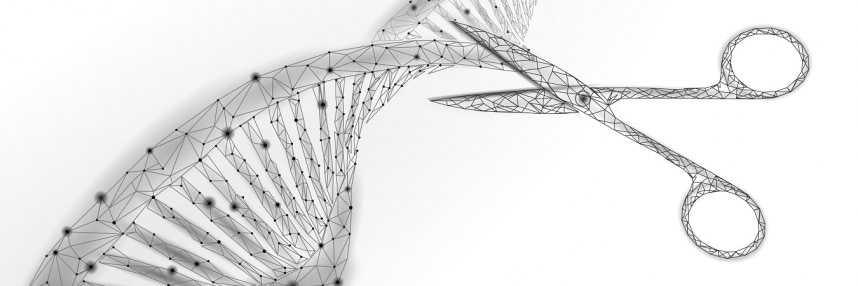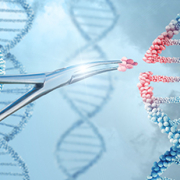Prime editing: the new kid on the block
Progress in the field of gene editing has been rapid, but one relatively new technique could be useful for up to 90% of known disease-causing variants
A long history of genome sequencing has brought us to where we are now: gene editing, the ability to edit genomes in order to improve health. Yet despite rapid progress, genome editing is not without its problems and is still considered risky. Prime editing, a relatively new technique, offers exciting promise.
The challenges of CRISPR
CRISPR was not the first genome editor, but it has undoubtedly been one of the most impactful technologies of the past decade. Quicker, easier to use and less expensive than previous approaches, it has facilitated a boom in genomic research.
CRISPR Cas9 consists of a programmable guide RNA, which attaches to a target sequence in the DNA, and an enzyme called Cas9 which cuts through both strands of the DNA. The cell’s own repair mechanisms then patch the break and can incorporate a new piece of DNA if provided.
The problem with Cas9 is that it has been shown to introduce errors into the DNA at a rate that makes many scientists hesitant to recommend its use in human therapies. These include so-called indels – where extra DNA is either deleted or inserted at the site of the double-stranded break – and off-target effects, where Cas9 binds and cuts DNA at other locations in the genome apart from the intended site.
When considering using genome editing in a therapeutic context, such as for gene therapy, these unwanted changes need to be taken very seriously as they could affect the functioning of other genes and possibly cause cancer should they happen in key genes.
Avoiding double-strand breaks
Indels at the target site are associated with the double-stranded break, and so researchers have tried to invent genome editing systems that avoid this.
Enter base editing. Like CRISPR Cas9 it uses a guide RNA to target the correct part of the genome, but instead of cutting the DNA and replacing a section, base editing chemically alters a single nucleotide ‘letter’ in the genetic code.
Because a double-strand break is avoided, base editing is much less likely to introduce indels at the target site, although off-target effects have been reported. It is also limited in scope to correcting single point mutations.
Prime editing
Prime editing is a newer approach to genome editing developed by scientists at the Broad Institute, who previously developed base editing.
As with CRISPR Cas9 a strand of RNA acts as a guide, but in prime editing this is called a pegRNA, and includes the targeting sequence, but also the template of the desired alteration. An altered version of Cas9 ‘unzips’ the DNA at the target site, but does not make a double stranded cut. Instead only one of the DNA strands is cut, and an attached reverse transcriptase enzyme assembles the new DNA sequence from the pegRNA template. Once repaired, the other strand can be cut to prompt the cell to repair the DNA, which it will do by matching the sequence on the edited strand.
Because only one strand is cut at a time, the edits are precise and indels are drastically reduced. Initial results also indicate that off-target effects are much lower than those seen with CRISPR Cas9, although the precise reason for this is not understood.
Disease-causing mutations come in many types, from point mutations of a single ‘letter’ within a gene, to whole genes missing or duplicated, to the rearrangement of whole chunks of chromosomes. Prime editing can be applied to different types of mutations, not just single base changes, but is limited by the pegRNA, which will become unstable if too large. Its inventors claim however that it has the potential to correct 89% of the 75,000 human disease-causing mutations listed in the US National Institutes of Health Clinvar database.
As a proof-of-concept they used the approach to correct the mutations behind sickle cell anaemia and Tay-Sachs disease in human cell culture.
CRISPR Cas9 will remain useful, as it is not limited in terms of the size of edits it can make, but looks increasingly like future researchers will have toolkit of specialised editors suited to different jobs.
–









